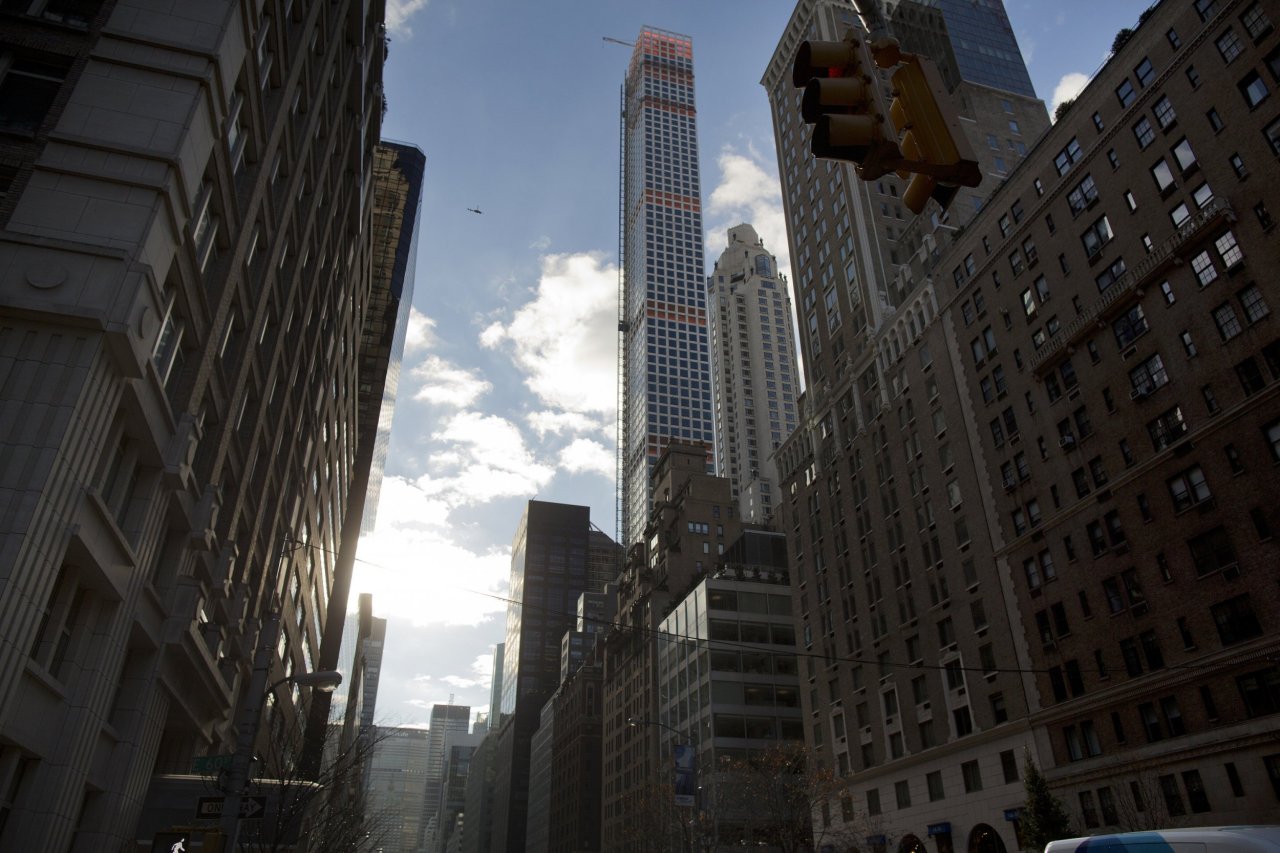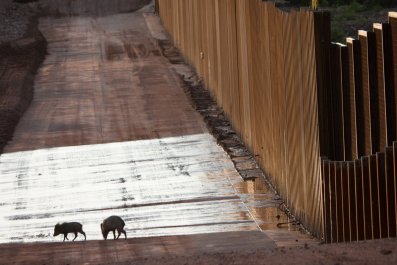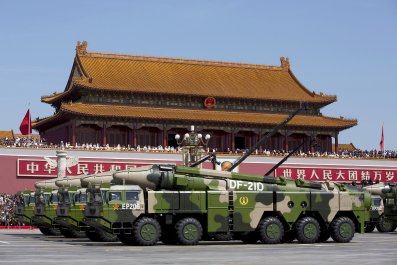Skyscrapers have been defining urban centers for more than a century, serving as residences, workplaces and occasionally even pieces of art. If you've scanned the New York City skyline lately, you may have noticed a new high—432 Park Ave., a tall, pencil-thin concrete structure rising above Central Park. According to the Council on Tall Buildings and Urban Habitat, a nonprofit group based at Chicago's Illinois Institute of Technology that developed the international standards for measuring building height, the residential tower is the 100th "supertall" building to be completed.
To be classified as "supertall," a building must measure at least 300 meters (984.25 feet) in height from the "the lowest, significant, open-air, pedestrian entrance to the architectural top of the building, including spires, but not including antennae, signage, flagpoles or other functional-technical equipment." At 426 meters (1,397.64 feet), 432 Park Ave. is the tallest residential building in New York City and the second-tallest building of any kind in the Big Apple, behind the 541-meter-high (1,774.93 feet) One World Trade Center.
These buildings share a home with the first-ever supertall, the 319-meter (1,046.59 feet) Chrysler Building, completed in 1930. For 60 years after the Chrysler Building's completion, the U.S. was the only country to have buildings that measured more than 300 meters up. But, as the number of supertalls has rapidly increased in the past 5 years, doubling from 50 to 100 worldwide between 2010 and 2015, more than half can now be found in Asia and the Middle East. Dubai claims the tallest of the supertalls: Burj Khalifa, a mixed-use skyscraper that measures a staggering 828 meters (2,716.54 feet).
So why all the recent upward expansion? According to the CTBUH's Jason Gabel, it has a lot to do with rapid urban development in Asia and the Middle East. Combined, these areas are home to 42 of the 50 supertall buildings produced since 2010. "China in particular has been extremely active in skyscraper construction, and has employed supertall towers as more than just sources of additional office and residential space, but as icons that are definitive components of their cities," Gabel explained. "Couple this with the fact that China's economy has been historically tied to ongoing construction activities, and you start to see why the region is using this architectural typology to accommodate its rapid population growth."
Improved technologies and materials have also made building skyscrapers a faster and more efficient process. The slenderness of new towers like 432 Park Ave., which has a ratio of 1:15, would not be possible without the use of super-high-strength concrete that provides superior compressive and structural performance.
Building Information Modeling, or BIM, has allowed those involved in the design and construction of supertalls to utilize three-dimensional models, which visualize and optimize how different components of the structures will work together. "The bigger the building," says Gabel, "the more BIM can help streamline the development and construction process for project teams." It's no surprise, then, that there are structures in the works that aim to take over the No. 1 spot on the highest buildings list.
And in places like New York City and Hong Kong—which are geographically limited when it comes to being able to expand horizontally—up is really the only place left to go.



















